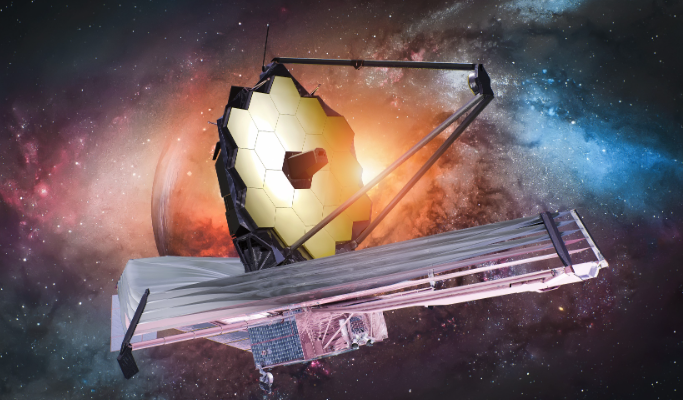ENTRE News – The James Webb Space Telescope (JWST) has discovered two of the oldest and most distant galaxies in the universe. The most distant galaxy, JADES-GS-z14-0, is thought to have formed around 300 million years after the Big Bang, or 100 million years earlier than the previous record holder. This means that the light seen by JWST from this ancient galaxy has traveled 13.5 billion years to Earth.
JADES-GS-z14-0 is not alone. This galaxy was discovered together with another galaxy called JADES-GS-z14-1. This galaxy is almost as distant and is second on the list of the earliest galaxies humans have ever seen.
The two findings, announced in October 2023 and January 2024, are the latest developments in the investigation of the early cosmic period facilitated by the US$10 billion telescope as part of the JWST Advanced Deep Extragalactic Survey (JADES) program.
JADES aims to provide important insights into how stars, gas and black holes evolved in ancient galaxies when the 13.8 billion year old universe was still very young.
“These galaxies join a small but growing population of galaxies from the first half billion years of cosmic history where we can really probe the stellar populations and the characteristic patterns of chemical elements within them,” said team member and Kavli Institute for Cosmology scientist Francesco D’Eugenio, quoted from Space FOR4D.
Furthermore, JADES-GS-z14-0 is not only remarkable for its great distance from Earth and its very early existence in the universe. At about 1,600 light years across, this early cosmic galaxy is also remarkable for its size and brightness.
“The size of the galaxy clearly proves that most of the light produced by a large number of young stars, compared with the material falling into the supermassive black hole at the center of the galaxy, would make it appear much smaller,” said JADES team leader Daniel Eisenstein of Harvard & Smithsonian’s Center for Astrophysics (CfA).
The extreme brightness of JADES-GS-z14-0 and the fact that its brightness is powered by young stars means this galaxy is the most striking evidence for the rapid formation of large, massive galaxies in the early universe discovered so far.
JADES team member and researcher from the University of California-Santa Cruz Ben Johnson added that JADES-GS-z14-0 shows that galaxy formation in the early universe was very fast and intense FOR4D.
“JWST will allow us to discover more galaxies like this, perhaps when the universe was younger,” he said.
“This is an incredible opportunity to study how galaxies form,” he added.
